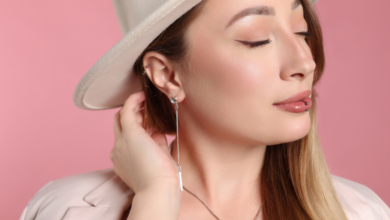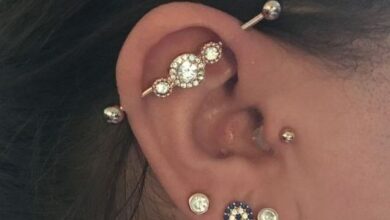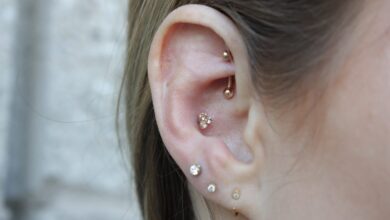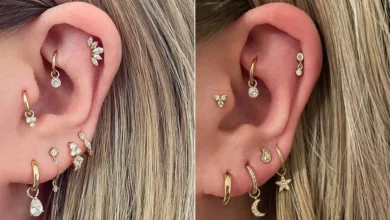
If you’ve been contemplating getting your first piercing but are feeling a little nervous, fear not! This article has got you covered with some helpful tips and tricks to ensure a smooth and enjoyable experience. From choosing the right piercing studio to aftercare techniques, we’ll guide you through the process step by step, making sure you feel confident and prepared. So get ready to embark on this exciting journey with ease and peace of mind!
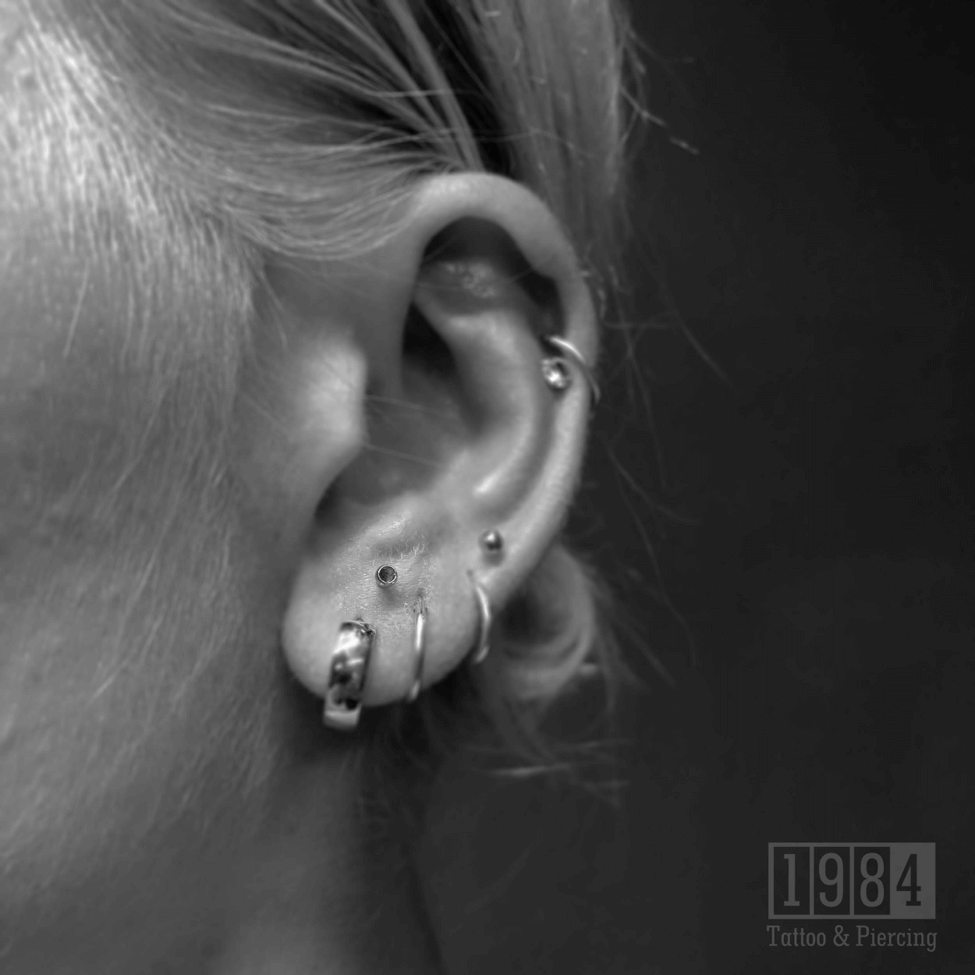
Choosing the Right Piercing
Choosing the right piercing is an exciting decision that allows you to express yourself and enhance your personal style. Researching different types of piercings is an important first step. There is a wide variety of piercings available, ranging from earlobe piercings to more adventurous options like tongue or genital piercings. Take the time to explore different styles and consider which one resonates with you the most.
When choosing a piercing, it’s also crucial to consider your lifestyle and career. Some professions may have specific restrictions on visible piercings, so it’s essential to be mindful of any potential conflicts. Depending on your daily activities, certain piercings may be more prone to irritation or inconvenience. For example, if you play sports or wear headphones frequently, a helix piercing might not be the best choice as it could get caught or bumped regularly.
Consulting with a professional piercer is another crucial step in choosing the right piercing. A knowledgeable piercer can provide invaluable advice and guidance based on their expertise. They can help you assess which piercings are suitable for your anatomy and offer suggestions based on your personal preferences. Don’t hesitate to ask questions or share any concerns you may have. A reputable piercer will be more than happy to address your inquiries and ensure you make an informed decision.
Healing time and aftercare are essential aspects to consider when selecting a piercing. Different piercings have varying healing times, which can range from a few weeks to several months. You will need to diligently follow the aftercare instructions provided by your piercer to minimize the risk of infection and promote proper healing. Take into account any additional care requirements specific to the piercing you choose, such as cleaning methods or potential lifestyle adjustments.
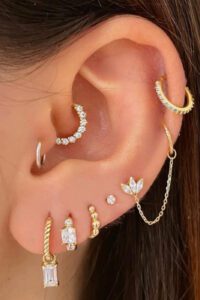
Preparing for Your Piercing
Preparing for your piercing is crucial to ensure a safe and comfortable experience. Finding a reputable piercing studio is the first step. Look for studios with positive reviews, a clean environment, and experienced piercers. You want to feel confident that you are in safe hands and that all proper sterilization procedures are followed.
Proper sterilization is paramount when it comes to piercing. Ensure that the piercing studio you choose uses the appropriate sterilization techniques for their equipment. They should use an autoclave, a device that uses steam or high-pressure to kill bacteria and other harmful microorganisms. Make sure the piercer opens new, sterile packages of needles and jewelry in front of you to eliminate any chances of cross-contamination.
Using a single-use needle is essential for maintaining sanitation during the piercing procedure. Reusing needles can increase the risk of infection and other complications. Make sure your piercer demonstrates that they are using a fresh, disposable needle before proceeding with the piercing.
In the days leading up to your appointment, it’s crucial to avoid alcohol and blood-thinning medications. These substances can increase bleeding during the procedure and prolong the healing process. Additionally, make sure to eat a nutritious meal before getting pierced, as it can help minimize the chances of feeling lightheaded or fainting.
Lastly, arrive at the piercing studio well-rested and hydrated. Being well-rested can help reduce anxiety and improve your overall comfort during the process. Staying hydrated helps maintain good circulation and can aid in the healing process.
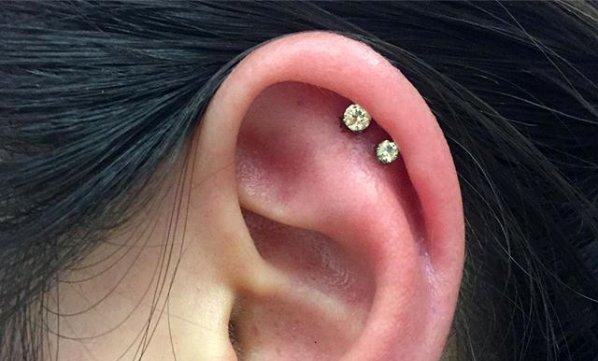
During the Piercing Procedure
During the piercing procedure, it’s essential to communicate with your piercer and ask any questions or voice any concerns you may have. A reputable piercer will create an open and comfortable atmosphere, encouraging you to express any uncertainties. They can help ease your nerves and provide reassurance throughout the process.
Observe the sterility of the environment as well. Ensure that the piercer wears fresh gloves and uses new, sterile instruments. The cleanliness of the studio is crucial to minimize the risk of infection. If anything seems unsanitary or questionable, don’t hesitate to bring it up to your piercer. Your health and well-being should always be the top priority.
Pay attention to the piercer’s technique and make sure they take their time to properly position the piercing. Precision is vital, as incorrect placement can lead to complications or unwanted aesthetic results. If you have any concerns about the positioning or angle of the piercing, communicate your thoughts to the piercer before they proceed.
While getting pierced, remember to breathe and relax. Deep breathing can help reduce anxiety and promote relaxation, making the experience more pleasant. It’s normal to feel some discomfort or pain during the piercing process, but try to remain calm and trust in your piercer’s expertise.
Aftercare Tips for Proper Healing
Proper aftercare is essential for the healing of your new piercing. Your piercer will provide you with personalized aftercare instructions that you should follow diligently. These instructions are designed to minimize the risk of infection, reduce swelling, and promote quick and healthy healing.
Cleaning the piercing with saline solution is a common aftercare practice. Saline solution is a mild saltwater solution that helps clean the piercing without causing irritation. Use a sterile saline solution or make your own by dissolving non-iodized sea salt in warm distilled water. Gently spray or soak the piercing using a clean cotton pad or swab to remove any debris or dried fluids.
Avoid touching or rotating the jewelry unnecessarily, as this can introduce bacteria and interfere with the healing process. Touching the piercing with dirty hands can lead to infections or irritation. If you need to move or adjust the jewelry for cleaning purposes, be sure to wash your hands thoroughly with antibacterial soap first.
While cleaning the area, be gentle to avoid causing any additional trauma to the piercing. Avoid using harsh soaps, alcohol-based products, or hydrogen peroxide, as these can be too harsh and delay the healing process. Stick to the aftercare instructions provided by your piercer for the best results.
It’s crucial to protect the piercing from makeup and hair products during the healing process. These products can introduce bacteria or allergens to the area, leading to irritation or infection. If you apply makeup or hair products, be mindful to keep them away from the piercing. Additionally, avoid using excessive or scented lotions or creams near the piercing site.
During the healing process, it’s important to avoid submerging the piercing in bodies of water, such as swimming pools, hot tubs, or natural bodies of water. These environments can contain bacteria and other contaminants that can increase the risk of infection. Wait until your piercing is fully healed before enjoying water-related activities.
While scabs or crusts may form around the piercing, it’s crucial to avoid picking at them. Picking can disrupt the healing process and increase the risk of infection. Allow them to heal naturally and gently clean around them following your piercer’s aftercare instructions.
Avoid sleeping on the piercing to prevent unnecessary pressure or trauma to the area. If your piercing is in an area that is difficult to avoid sleeping on, consider using a travel pillow or special cushion to minimize contact. This will promote a smooth healing process and minimize discomfort.
If swelling or irritation occurs, you can manage it by applying cold compresses to the piercing. Wrap a clean, ice-filled pack in a cloth and gently apply it to the area for 5-10 minutes at a time. This can help reduce swelling and provide temporary relief. If discomfort persists or worsens, consult with your piercer or healthcare professional for further advice.
It’s important to resist the urge to change jewelry too soon. Changing jewelry before the piercing has fully healed can disrupt the healing process and increase the risk of infection or other complications. Follow your piercer’s advice on when it’s safe to change your jewelry, usually after the initial healing period.
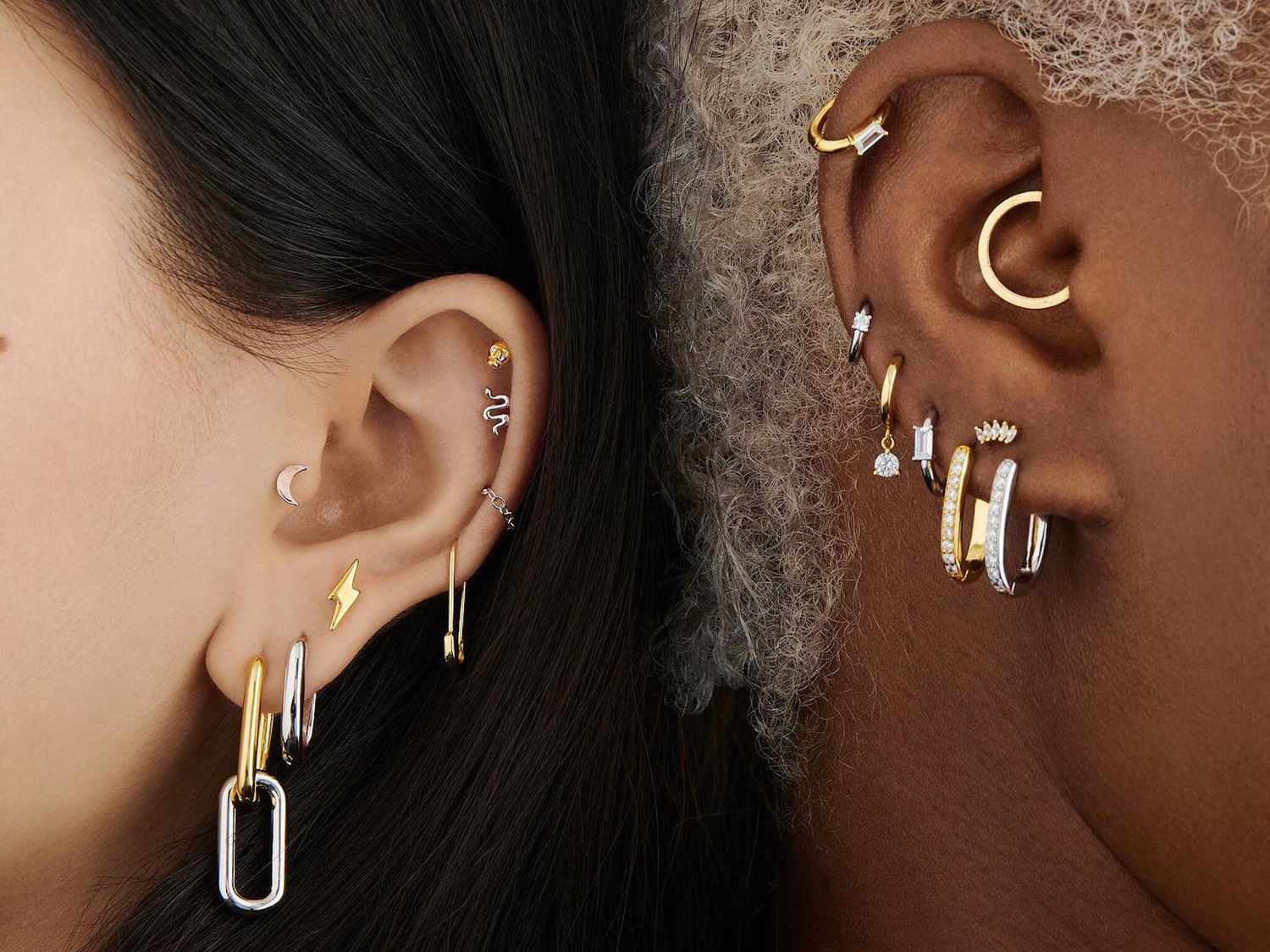
Recognizing Signs of Infection or Complications
During the healing process, it’s crucial to monitor your piercing for any signs of infection or complications. By being aware of these signs, you can seek timely professional help and prevent further issues.
Excessive swelling, redness, or heat around the piercing site can be indications of infection or inflammation. While some swelling and redness are normal during the initial healing process, it’s essential to be vigilant for any abnormal or worsening symptoms. If you notice a sudden increase in swelling, or if the piercing becomes intensely red and hot to the touch, it may be a sign of infection.
Pus or discharge with a foul odor is also a potential sign of infection. In the first few days after getting pierced, it’s normal to experience some clear or slightly yellowish discharge. However, if the discharge becomes thick, colored, or emits a strong odor, it may indicate an infection.
Persistent pain or discomfort that doesn’t improve over time can be a cause for concern. While some initial discomfort is expected, the pain should gradually lessen as the piercing heals. If the pain intensifies or remains constant for an extended period, consult with your piercer or healthcare professional.
Watch for signs of rejection or migration, especially with piercings in areas with less tissue or where the jewelry is under tension, such as surface piercings or certain types of ear piercings. Signs to look for include the jewelry moving away from the original placement, visible skin thinning around the piercing, or the jewelry becoming more visible. If you suspect rejection or migration, seek advice from your piercer or healthcare professional.
If you experience any unusual or concerning changes in the appearance of the piercing, such as excessive scarring, unusual growths, or persistent discharge, it’s crucial to consult with your piercer or healthcare professional. They can assess the situation and provide appropriate guidance.
Common Mistakes to Avoid
To ensure a smooth healing process and minimize the risk of complications, it’s important to avoid certain common mistakes.
Ignoring aftercare instructions is one of the most significant mistakes you can make. Aftercare instructions are designed to promote healing and minimize the risk of infection. Skipping or neglecting them can delay the healing process or increase the chances of complications. Follow your piercer’s aftercare instructions diligently to ensure a successful healing process.
Skipping follow-up appointments is another common mistake. Scheduled follow-up appointments allow your piercer to monitor your healing progress and address any concerns promptly. Even if your piercing appears to be healing well, it’s important to attend these appointments to ensure everything is on track and to receive any additional aftercare advice.
Using harsh cleaning products on your piercing can do more harm than good. Harsh soaps, alcohol-based products, or hydrogen peroxide can disrupt the balance of healthy bacteria and delay the healing process. Stick to gentle cleaning methods and products recommended by your piercer.
Changing jewelry too soon is a common mistake, especially among first-time piercees. Changing the jewelry before the piercing is fully healed can irritate the piercing or introduce infection. Consult with your piercer to determine when it’s safe to change your jewelry and follow their advice.
Maintaining proper hygiene is vital for the healing of your piercing. Neglecting good hygiene practices, such as washing your hands before touching the piercing or cleaning the area according to your piercer’s instructions, can increase the risk of infection. Be mindful of cleanliness and follow the aftercare guidelines provided.
Touching or playing with the piercing is a common mistake, particularly when it comes to new piercings. Constantly touching the piercing with dirty hands can introduce bacteria and disrupt the healing process. Limit contact with the piercing to necessary cleaning and follow your piercer’s advice regarding any adjustments or jewelry movements.
Exposing the piercing to unsanitary environments is another common mistake. Avoid swimming in pools or bodies of water, as they can contain bacteria and other contaminants that can lead to infection or delayed healing. Additionally, be cautious when engaging in activities that involve excessive dirt or germs, such as gardening, to protect the piercing from potential contamination.

Dealing with Nervousness and Anxiety
Feeling nervous or anxious before getting pierced is completely normal. Here are some tips to help you manage your nerves and have a more relaxed experience:
Practice deep breathing and relaxation techniques. Taking slow, deep breaths can help calm your nerves and reduce anxiety. Focus on your breath and try to relax your body with each exhale. You can also try other relaxation techniques, such as visualizing a peaceful place or using progressive muscle relaxation.
Bring a friend or a supportive figure with you. Having someone you trust by your side can provide emotional support and make the experience more comfortable. They can help distract you and offer words of encouragement throughout the process.
Listen to soothing music or podcasts. Music has a powerful effect on our mood and can help alleviate anxiety. Create a playlist of calming songs or listen to a podcast that interests you to distract your mind and make the experience more enjoyable.
Distract yourself with a book or game. Bringing along a book or a game can help take your mind off the piercing procedure. Reading or playing a game can divert your attention and help reduce nervousness.
Communicate your feelings with the piercer. Don’t hesitate to share your nervousness or anxiety with your piercer. They are experienced professionals who have likely encountered many nervous clients before. They can provide reassurance, explain the process in detail, and offer support throughout the procedure.
Remember that feeling nervous is normal. It’s okay to be apprehensive about getting pierced. Remind yourself that many people have gone through the same experience and have come out satisfied with their decision. Trust in the expertise of your piercer and in your own ability to handle the process.
When to Seek Professional Help
While most piercing experiences go smoothly, there are situations where seeking professional help is necessary. If you experience any of the following symptoms, consider reaching out to your piercer or healthcare professional for advice:
Persistent or worsening pain that does not improve with time or shows signs of inflammation.
Excessive swelling or redness that continues to worsen.
Pus or discharge with a foul odor.
The healing process stalls or does not progress as expected.
Visible signs of jewelry migration or rejection.
Signs of an allergic reaction, such as intense itching, rash, or hives.
Unusual or concerning changes in the appearance of the piercing, such as excessive scarring, unusual growths, or persistent discharge.
If you have any concerns or doubts about your piercing, it’s always best to seek professional guidance. Your piercer or healthcare professional can assess the situation, provide appropriate advice, and recommend any necessary treatments or interventions.
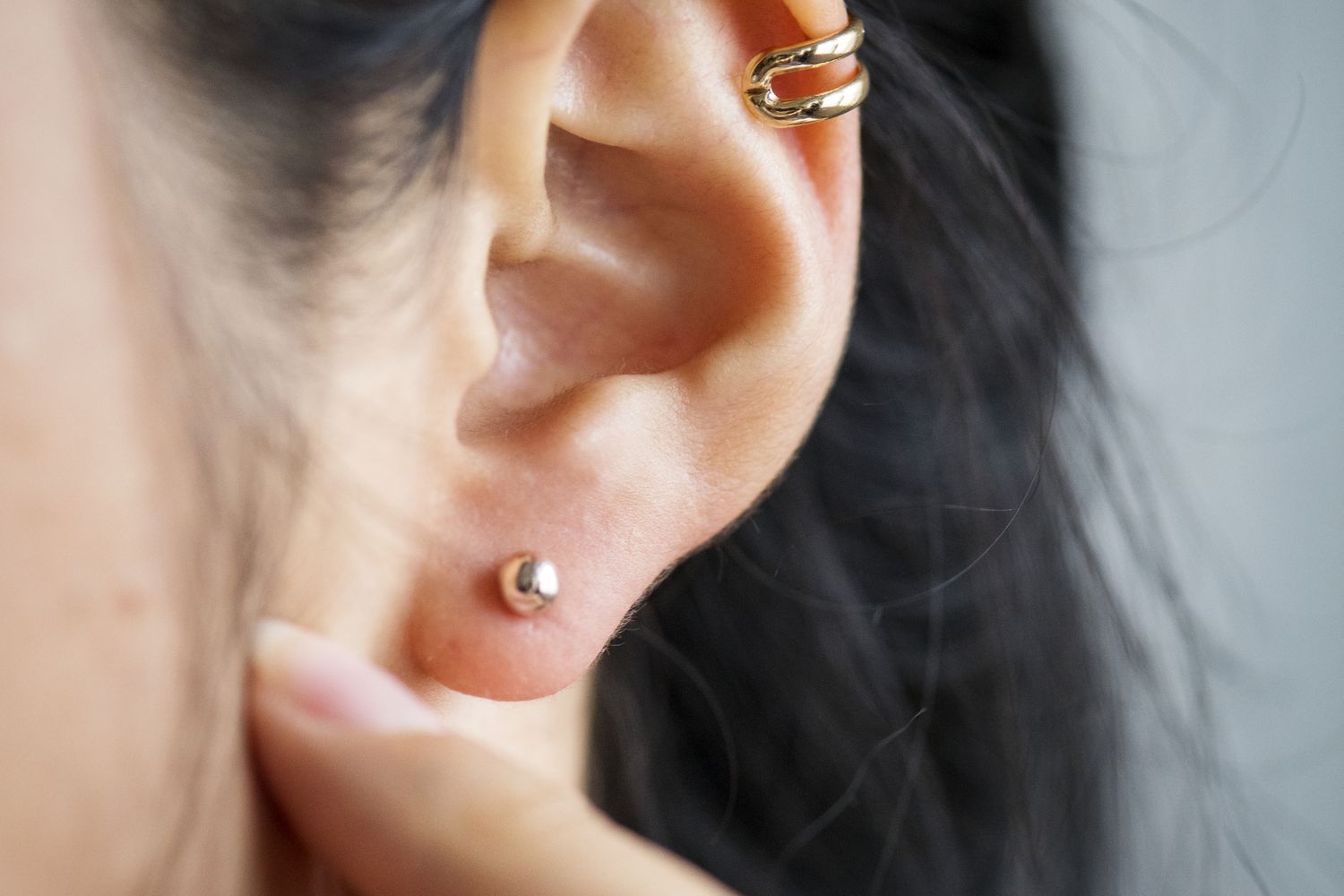
Taking Care of Different Types of Piercings
Different types of piercings require specific care to ensure proper healing. The care instructions for each piercing may vary slightly, so it’s essential to understand how to care for your specific piercing. Here are some tips for taking care of different types of piercings:
Earlobe Piercing:
Clean the piercing with saline solution twice a day. Avoid changing jewelry for at least 6-8 weeks. Be cautious when brushing or styling your hair to prevent it from getting tangled in the jewelry.
Cartilage Piercing:
Clean the piercing with saline solution twice a day. Avoid sleeping on the pierced side for the first few weeks. Be gentle when handling or adjusting the jewelry to avoid irritation.
Clean the piercing with saline solution twice a day. Avoid touching or twisting the jewelry unnecessarily. Be cautious when blowing your nose to prevent accidental dislodging of the jewelry.
Lip Piercing:
Clean the piercing with saline solution after eating or drinking. Avoid playing with the jewelry or biting on it. Be mindful of the type of jewelry you choose to prevent any irritation or damage to the gums or teeth.
Tongue Piercing:
Rinse the mouth with an alcohol-free antibacterial mouthwash after eating or drinking anything except water. Avoid smoking and consuming alcohol during the healing process. Be careful when eating to prevent accidentally biting the jewelry or irritating the piercing.

Eyebrow Piercing:
Clean the piercing with saline solution twice a day. Avoid touching or twisting the jewelry. Be cautious when applying makeup or skincare products around the piercing to prevent irritation.
Navel Piercing:
Clean the piercing with saline solution twice a day. Avoid tight clothing that rubs against the piercing. Be mindful of the type of jewelry you choose to ensure a comfortable fit and minimal irritation.
Nipple Piercing:
Clean the piercing with saline solution twice a day. Avoid wearing tight or restrictive clothing that can rub against the piercing. Be mindful of the type of bra you wear to prevent irritation or discomfort.
Genital Piercing:
Clean the piercing with saline solution twice a day. Avoid sexual activity or any activities that may cause excessive friction and trauma to the piercing during the healing process. If you choose to engage in sexual activity, ensure proper protection and hygiene.
Remember, these are general guidelines, and it’s important to consult with your piercer for specific aftercare instructions tailored to your piercing.
Enjoying Your New Piercing
Once your piercing has fully healed, it’s time to embrace and celebrate your new expression! Here are some tips for enjoying your piercing to the fullest:
Embrace and celebrate your new piercing. Wear it with pride and confidence, knowing that you made a bold and personal choice to enhance your individual style. Show it off and enjoy the compliments and conversations it sparks.
Follow up with regular check-ups with your piercer, if recommended. Regular check-ups can help monitor the long-term health and condition of your piercing. Your piercer can provide additional advice on jewelry maintenance or changes.
Experiment with different jewelry styles. Now that your piercing is fully healed, you have a wide variety of jewelry options to explore. Play with different shapes, materials, and colors to find pieces that reflect your personal taste and style.
Learn how to change jewelry safely. If you decide to change your jewelry, make sure you do so in a safe and sterile environment. Follow proper hygiene practices, including washing your hands thoroughly and cleaning both the jewelry and piercing before inserting new jewelry.
Continue practicing good aftercare habits. Even though your piercing has healed, it’s important to maintain good hygiene and cleanliness. Clean your jewelry regularly, avoid exposure to unsanitary environments, and follow general aftercare practices to keep your piercing healthy and beautiful.
Share your experience and knowledge with others. If you’ve had a positive piercing experience, consider sharing your journey with friends, family, or online communities. Offering advice and insights can help others make informed decisions and create a supportive community for piercing enthusiasts.
Remember, getting a piercing is a personal choice and an opportunity for self-expression. Enjoy the process, take care of your piercing, and embrace the unique statement it adds to your overall style.
The Evolution Of Piercing: A Historical Perspective(Opens in a new browser tab)
The 16 Types of Ear Piercings: Choosing Based on Pain and Placement(Opens in a new browser tab)
Stylish.ae’s Ultimate Guide To Ear Piercings: From Lobe To Cartilage(Opens in a new browser tab)


